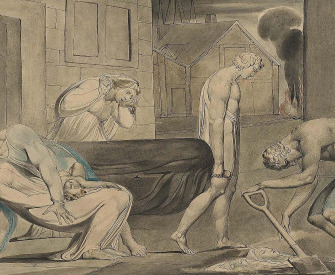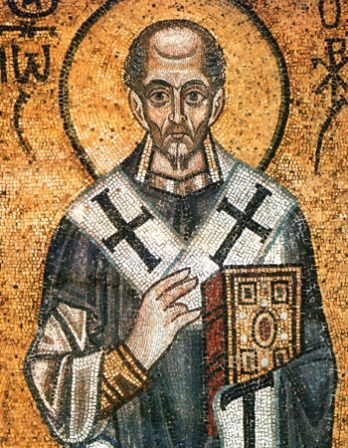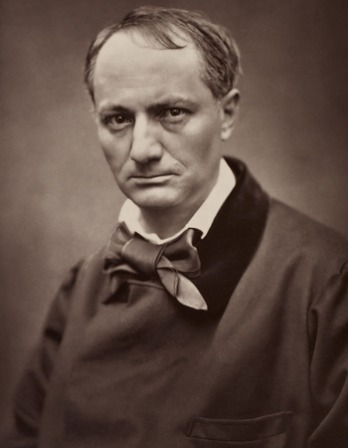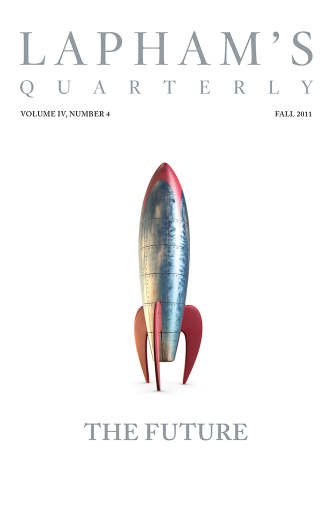Not all heads have a brain.
—French proverb,The Ghost and the Princess
The correspondence of René Descartes and Princess Elisabeth of Bohemia—a debate about mind, soul, and immortality.
By Anthony Gottlieb
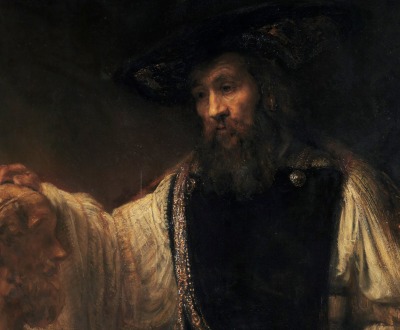
Aristotle with a Bust of Homer (detail), by Rembrandt van Rijn, 1653. © The Metropolitan Museum of Art, Purchase, special contributions and funds given or bequeathed by friends of the Museum, 1961.
There is an “official theory” about the nature of minds that “hails chiefly from Descartes,” wrote Gilbert Ryle, an Oxford philosopher. According to the theory, each person has a mind that is a private, inner world. It has no spatial dimensions and is not subject to laws that govern physical objects, yet it is mysteriously connected to a material body during a person’s earthly life. Ryle dubbed this “the dogma of the Ghost in the Machine.”
People have not always thought of the mind and the body in this way. Homer’s heroes are not depicted as composites that are only partly physical. Their awareness, intelligence, and other mental activities are part of their bodily lives. And although the shades of the dead lurk in the Homeric underworld, these etiolated creatures are little more than fading echoes of the living. Some later Greek philosophers explicitly stated that the soul is made of physical stuff. For Democritus, it was tiny units of solid matter. For the Stoics, it was a mixture of fire and air.
Unlike Homer and the Greek materialists, Plato did believe in something like René Descartes’ ghost in the machine. A person has an inner rational self, according to Plato, which can escape its bodily imprisonment with its powers intact. Yet Ryle was right to single out Descartes even though parts of the “official theory” can be traced to Plato. Descartes sharpened the concepts of mind and matter, crystallizing ideas that took shape in the seventeenth century and giving us the modern form of the so-called mind-body problem.
In his Meditations on First Philosophy, published in 1641, Descartes announced that he was essentially a thinking thing: “Thought…alone is inseparable from me.” There is an outer world, which includes my body, but I could still exist even if it were all destroyed. And what exactly is a thinking thing? Something that is aware. Descartes explained that by “thought” he meant “everything that is within us in such a way that we are immediately aware of it.” This included sensation, will, intellect, and imagination. Thus Descartes made consciousness the distinguishing mark of the mental.
He also merged the concepts of mind and soul. The “mind” was “the principle in virtue of which we think,” and a person’s soul was his or her mind. This was a novelty since in medieval science and philosophy, the soul was largely regarded as what animates inert matter. If a body died, it was because its life-giving soul had departed. But for Descartes it was the other way around. If the soul departed, it was because its body had broken down.
What Descartes had to say about the body was as avant-garde as what he had to say about the mind. A keen dissector of animal carcasses, which he procured on regular visits to butchers, Descartes developed a comprehensive physiology that treated bodies as if they were machines. “I suppose the body to be just a statue or a machine made of earth,” he wrote in the early 1630s, in his Treatise on Man, one of two scientific works he chose not to publish after learning of Galileo’s conviction for heresy in 1633. He compared human bodies to “clocks, artificial fountains, mills, and other similar machines that…have the power to move of their own accord in various ways.” He drew particular attention to some fountains in the royal gardens of St.-Germain-en-Laye, outside Paris, in which the force of water drove various contraptions. Descartes explained that “a certain very fine wind, or…flame,” which he called “animal spirits,” courses through the nerves of the body, just as water flowed through the pipes of these fountains.
His account of the body was intended as an application of what would later be called the mechanical philosophy. This new science, mainly inspired by Galileo, saw nature in terms of matter, motion, and mathematical laws. Physical change was explained by the contact between objects and the size, shape, and motion of their interacting component parts rather than by the intrinsic qualities invoked by Aristotelian thinkers—whom the Galileans reckoned could not really explain anything at all. (Molière parodied such empty science in his play The Imaginary Invalid, in which a student attributes the soporific effect of opium simply to its inherent sleep-inducing quality, or “dormitive virtue.”)
After dealing mechanistically with digestion and the action of the heart, lungs, and other organs, Descartes’ Treatise proceeds to treat perception, volition, and memory along similar lines. Helpful diagrams are provided throughout. The brain’s pineal gland plays a crucial role in these mental activities, for it is here that the “rational soul,” or mind, has “its principal seat,” exercising its influence on the body and receiving messages from it via the animal spirits that course through the body’s nerves to and from the brain. Again exploiting his analogy with the hydraulic devices in the royal gardens, Descartes wrote that the soul “resides” in the pineal gland, “like the fountaineer, who must be stationed at the tanks to which the fountains’ pipes return if he wants to initiate, impede, or in some way alter their movements.”
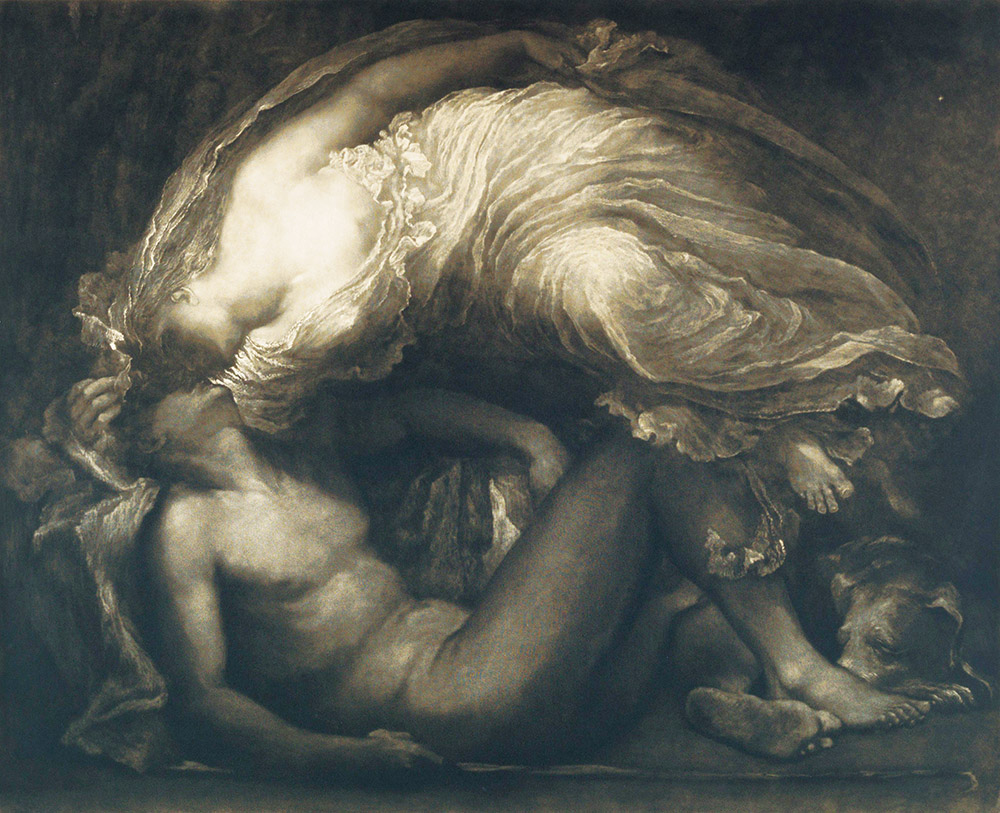
Diana and Endymion, etching by Frank Short after George Frederic Watts, 1891. © The Metropolitan Museum of Art, The Elisha Whittelsey Collection, the Elisha Whittelsey Fund, 1959.
This seems puzzling. According to Descartes, the mind is not a spatial thing with a size or shape, so we presumably should not take his statement that it “resides” in the brain too literally. How, then, are we to take it? His anatomical researches may have led him to the pineal gland, but why was he using anatomy in the first place given the supposed ghostliness of the mind?
In late 1632, Descartes wrote from Deventer, in Holland, where he was living, to his close friend Marin Mersenne, a mendicant friar and polymath in Paris, about the work he had been doing. “I am,” he reported, “dissecting the heads of different animals in order to explain what imagination, memory, etc., consist in.” Descartes presumably believed that activities such as remembering and imagining had both mental and physical components, and that prodding the brains of cows could shed some light on the latter.
At the start of his Treatise, he wrote that man is composed of two different “natures,” namely a soul and a body. And in Principles of Philosophy, a summation of his scientific and philosophical teachings, Descartes stated that there were just two ultimate classes of things:
First, intellectual or thinking things, i.e., those that pertain to mind or thinking substance; and secondly, material things, i.e., those that pertain to extended substance or body. Perception, volition, and all the modes both of perceiving and willing are referred to thinking substance; while to extended substance belong size (that is, extension in length, breadth, and depth), shape, motion, position, divisibility of component parts, and the like.
This idea that there are two realms, the mental and the physical, is what later philosophers came to call Descartes’ dualism. However, the passage from Principles continued:
We also experience within ourselves certain other things that must not be referred either to the mind alone or to the body alone. These arise…from the close and intimate union of our mind with the body. This list includes, first, appetites like hunger and thirst; secondly, the emotions or passions of the mind that do not consist of thought alone, such as the emotions of anger, joy, sadness, and love; and finally, all the sensations.
So there was also a third class of hybrid things that are both mental and physical. Philosophers have recently suggested that Descartes’ position should therefore be labeled trialism. This term will not catch on, but it has long been recognized that Descartes’ “intimate union” of mind and body raises perplexing difficulties for the idea of dualism. How is it that mind and body manage to interact and affect each other if they are such different things? This question was pressed on Descartes in the spring of 1643 by a young woman of twenty-four, Elisabeth von der Pfalz, also known as Princess Elisabeth of Bohemia. When others raised such difficulties, Descartes tended to brush them aside. But he listened to the princess.
Elisabeth was the third of the thirteen children of Frederick V, elector of the Rhenish Palatinate, and Elizabeth Stuart, nicknamed the Queen of Hearts, who was the daughter of James I of England. Frederick was briefly king of Bohemia until he was ousted after the Battle of White Mountain, near Prague, in one of the first conflicts of what became the Thirty Years’ War. The young princess was brought up at first by relatives in Silesia, then moved to her parents’ court in exile at the Hague. It was there that she read Descartes’ Meditations.
Hearing of her interest in his work, Descartes expressed a wish to see her, and they began a correspondence that lasted until two months before his death, in 1650. Descartes dedicated his Principles to Elisabeth, even though he had at the time known her for only a year. His last work, The Passions of the Soul, which dealt with the hybrid states that arise from the “intimate union” of mind and body, was, he said, written for her.
The mind of man is capable of anything.
—Guy de Maupassant, 1884Descartes’ replies to Elisabeth are less testy than his answers to other critics tended to be. She was incisive and brilliant: one biographer of Descartes judged that the middle-aged philosopher “learned much more from Elisabeth’s letters than she did from him.” Their correspondence sometimes wandered into personal matters as well as intellectual ones. Descartes’ letters to the princess include his sole written reference to his mother—oddly, he told Elisabeth that she had died a few days after his birth when in fact it had been fourteen months later.
In her first letter, after modestly introducing herself as an “ignorant and intractable person,” Elisabeth went quickly to the point:
I ask you please to tell me how the soul of a human being (it being only a thinking substance) can determine the bodily spirits, in order to bring about voluntary actions. For it seems that all determination of movement happens through the impulsion of the thing moved, by the manner in which it is pushed by that which moves it, or else by the particular qualities and shape of the surface of the latter. Physical contact is required for the first two conditions, extension for the third. You entirely exclude the one [extension—i.e., spatial dimensions] from the notion you have of the soul, and the other [physical contact] appears to me incompatible with an immaterial thing.
In effect, Elisabeth was turning Descartes’ own criticism of scholastic pseudoscience against him. She saw that his account of causal interaction between a material body and a nonmaterial mind conflicted with his defense of the mechanical philosophy. If pre-Galilean science was empty, then so too was what Descartes said about the pineal gland.
Descartes acknowledged that she had raised a fair question, and made some half-hearted stabs at an answer. A few philosophers think Descartes’ position is more defensible than he managed to make it seem in his replies. But it is notable that Descartes appears to have come close to abandoning it. When the princess pressed her point and wrote that “it would be easier for me to concede matter and extension to the soul than to concede the capacity to move a body and to be moved by it to an immaterial thing,” Descartes made what arguably amounts to a significant retreat: “I beg Your Highness to feel free to attribute…matter and…extension to the soul, for to do so is to do nothing but conceive it as united to the body.” He also tried to evade responsibility for making sense of the mind-body relation by suggesting that it was impossible to do so:
It does not seem to me that the human mind is capable of conceiving very distinctly, and at the same time, the distinction between soul and body and their union since to do so it is necessary to conceive them as one single thing and at the same time to conceive them as two, which is contradictory.
Another awkward point raised by Elisabeth concerned Descartes’ idea that the mind can exist apart from the body after death. Bodily ailments, of which the princess often complained, could evidently affect one’s mental states. So “it is altogether very difficult to understand,” she wrote, “that a soul…being able to subsist without the body, and having nothing in common with it…is still so governed by it.” In other words, if the mind can be independent of the body after death, why can it not manage this beforehand as well?
Descartes repeatedly stated that the key thing to understand about the mind is that it can in theory survive death—which is “all that is required as a foundation for religion,” as he told his friend Mersenne. And he wrote that the “most important prerequisite for knowledge of the immortality of the soul is for us to form a concept of the soul that is…quite distinct from every concept of body.” By body he meant matter, not just the human body. He offered several considerations to show the distinctness of these concepts. One is that we cannot understand matter “except as being divisible, while by contrast we cannot understand a mind except as being indivisible.” That is, we cannot conceive of half a mind, but we can always conceive of halving a piece of matter, however tiny it is. Another is that our idea of a mind is the idea of something that thinks and is not in space, while our idea of matter is the idea of something that is in space and does not think. Such considerations, he wrote in his Meditations, “are enough to show that the decay of the body does not imply the destruction of the mind, and are hence enough to give mortals the hope of an afterlife.”
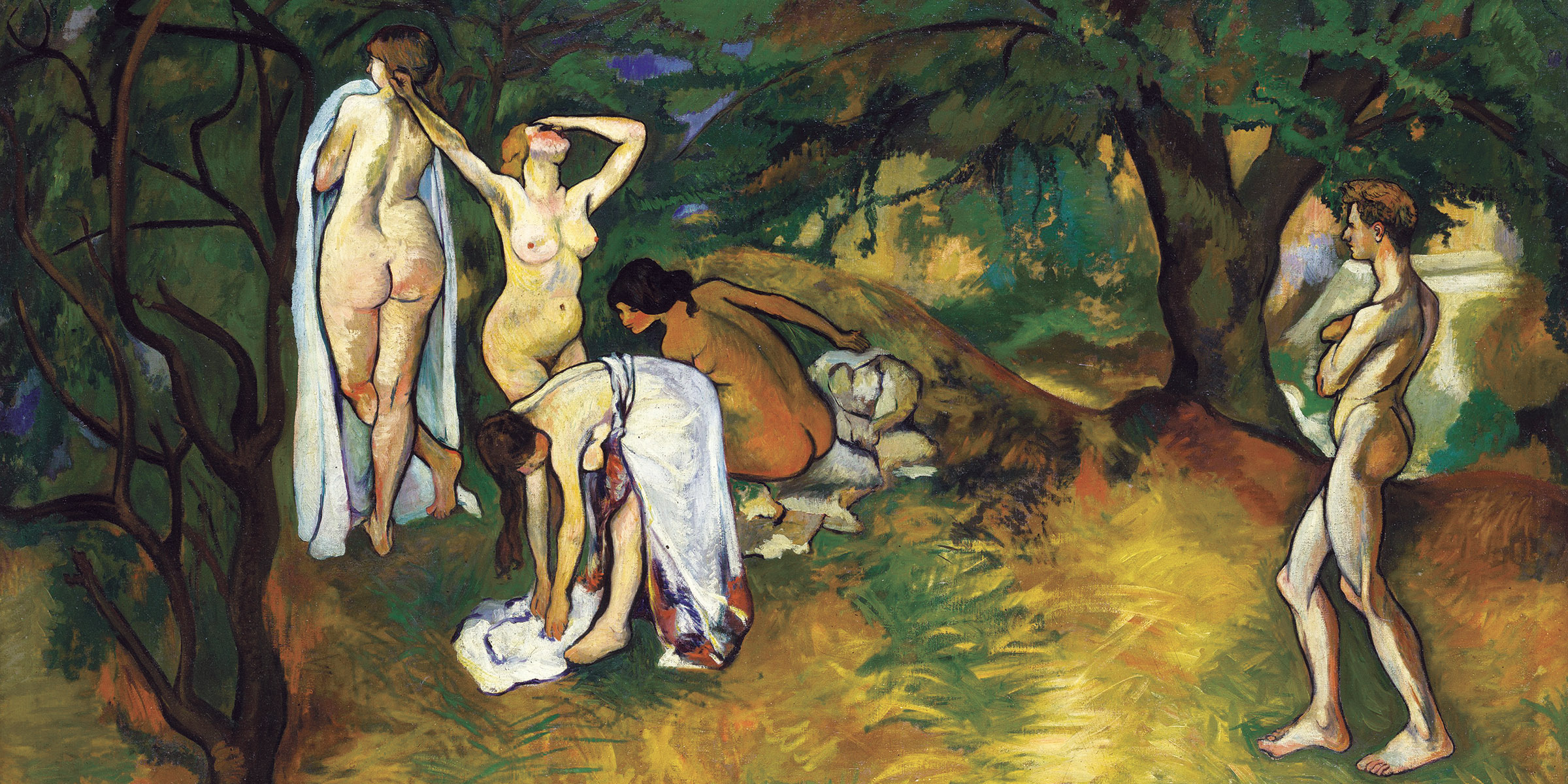
Joy of Life, by Suzanne Valadon, 1911. © The Metropolitan Museum of Art, Bequest of Miss Adelaide Milton de Groot (1876–1967), 1967.
When Descartes made his concession to Elisabeth—telling her, in effect, that it was all right to regard the soul as material—he immediately added that “one would not cease to know…that the soul is separable from [the body].” This suggests that what mattered most to him in his “dualism” was providing support for immortality. Many of the details were, perhaps, negotiable. Further evidence of the role that immortality played in his thinking about the mind is found in some remarks he made about animals. Writing to William Cavendish, the first marquess of Newcastle, who was particularly fond of horses, Descartes confessed that he found it hard to believe that beasts can have mental lives like ours, because “if they thought as we do, they would have an immortal soul like us.” This is unlikely, Descartes continued, because if you believe this of some creatures, there is no reason not to believe it of all, and “many of them, such as oysters and sponges, are too imperfect for that to be credible.”
What was to have been Descartes’ final word on the relation between mind and body never appeared, quite possibly because he was struggling to address Elisabeth’s difficulties. When Principles of Philosophy was published in 1644, it contained only four parts of a projected six. The first four dealt with “The Principles of Human Knowledge,” “The Principles of Material Things,” “The Visible Universe,” and “The Earth.” Parts five and six were to have covered “Plants and Animals” and “Man,” but Descartes wrote, “I am not yet completely clear about all the matters I would like to deal with there.”
Elisabeth’s last letter to Descartes was written on December 4, 1649. He was in Stockholm, where he was giving lessons to Queen Christina of Sweden, a friend of Elisabeth’s. The princess said she looked forward to his return, which he expected would be after the next summer, but he caught cold and died in February, shortly after the publication of his Passions of the Soul.
Their letters had traversed many topics. It was not all mind and body. They discussed the Stoicism of Seneca’s On the Happy Life in depth. Descartes set her a difficult problem in geometry, which she solved, though not in the way he had expected. The theological issue of the freedom of the will came up. Her remarks to him were always gracious but sometimes forthright and had the air of not taking any nonsense. She was not persuaded by his attempts to explain how God could be “the first and immutable cause” of people’s actions even when those actions were genuinely free. And when Descartes idly mused that perhaps “joy has some secret power to make fortune more favorable,” since he had noticed that he fared better at cards when he was happy, Elisabeth drily suggested that “the good luck you found…when you were inclined to joy from some other source apparently proceeded from your playing all your hands more freely, which usually makes one win.”
The human mind is an evolutionary product, just like the human body.
—Tetsuro Matsuzawa, 2010After Descartes’ death, Elisabeth asked for all her letters to be returned and refused to let them be published. The correspondence first appeared in full in 1879, almost two hundred years after her death, and in English in 2007. Without these letters, and others of hers, her philosophical gifts would have gone unnoticed. Unlike several other female thinkers of the seventeenth and early eighteenth centuries—including Damaris Cudworth, Catharine Trotter Cockburn, and Margaret Cavendish (wife of the horsey marquess)—Elisabeth did not write any treatises.
She continued to discuss Descartes’ work with the German philosopher G.W. Leibniz, who later observed that Descartes had “given up the game” of trying to explain how the body and soul interacted. One of Elisabeth’s sisters, the electress Sophie of Hanover, was Leibniz’s patron for many years. Sophie and Leibniz exchanged hundreds of letters, and the only one of his major philosophical works to be published in his lifetime was dedicated to her. Sophie’s daughter, Sophie-Charlotte, who became queen of Prussia, was a close friend and philosophical disciple of Leibniz. It seems that a penchant for philosophy ran in the family.
In 1667, Elisabeth succeeded a cousin as princess-abbess of Herford Abbey, which was a Protestant ecclesiastical principality of the Holy Roman Empire, with jurisdiction over some seven thousand souls in the surrounding villages. She ended her life as a princess in her own right, if not yet recognized as a philosopher in her own right.

